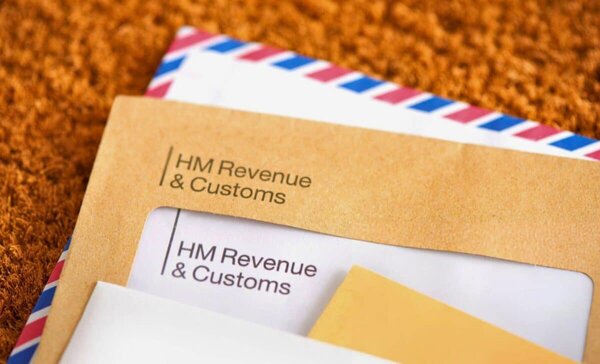Let’s Break This Down Together...
Wondering how to cut down your tax bill and support growing UK businesses at the same time?
The Enterprise Investment Scheme (EIS) could be the smart tax-saving opportunity you’ve been looking for. From slashing your income tax to deferring capital gains and even reducing inheritance tax, EIS comes packed with powerful incentives.
But we get it, with all the rules, deadlines, and forms, it can be tricky to navigate. That’s why we’ve broken it down for you, step by step, so you can understand exactly how EIS works and how to claim every bit of relief you're entitled to. Let’s get into it!
How to Use EIS to Reduce Capital Gains Tax UK: Understanding the Enterprise Investment Scheme
The Enterprise Investment Scheme (EIS) is one of the UK’s most generous tax relief programmes designed to encourage investment in early-stage, higher-risk companies by offering attractive tax incentives to investors.
Created by the government to help smaller businesses raise capital, EIS offers investors a package of tax benefits that can significantly reduce your overall tax bill.
When you invest in EIS-qualifying shares, you’re backing innovative British businesses while potentially slashing your tax liabilities.
How EIS Can Slash Your Capital Gains Tax Bill
The magic of EIS for reducing capital gains tax comes from its deferral relief (specifically, capital gains tax (CGT) deferral relief or CGT deferral relief). When you’ve made a taxable gain on another asset, you can use capital gains deferral by reinvesting that gain into EIS shares and benefit from EIS deferral relief.
You can defer taxable gains that arose up to three years before your EIS investment or one year after. This gives you a flexible four-year window to plan your capital gains deferral strategy and take advantage of EIS deferral relief.
The deferred gains don’t disappear forever. They become payable when you eventually sell your EIS shares, at which point you may have to pay capital gains tax (pay CGT) on the deferred gains, potentially when your tax situation is more favourable.
There’s no cap on the amount of gain you can defer through EIS investments. CGT relief and CGT exemption may apply to the gains if you meet the qualifying conditions, making it particularly valuable for investors with large capital gains.
In summary, the scheme allows you to claim deferral relief on your capital gain through EIS.

The Additional Tax Perks of EIS
Beyond CGT deferral, EIS offers 30% EIS income tax relief on investments up to the maximum investment of £1 million per tax year, increasing to £2 million if investing in knowledge-intensive companies.
If you hold your EIS shares for at least three years and they increase in value, any gains are considered tax free growth and are completely tax free from capital gains tax. This is a rare exemption in the UK tax system.
Should your EIS investment falls in value, you can claim EIS loss relief against either your income tax bill or capital gains tax. EIS loss relief can be used to offset your taxable income, helping to reduce the impact if your investment falls.
These combined reliefs, including the income tax relief claimed, mean EIS can reduce your tax bill by significantly more than the 30% initial relief. I once helped a client save over £50,000 in tax through strategic EIS timing.
EIS Investments and the Venture Capital Landscape
The Enterprise Investment Scheme (EIS) plays a pivotal role in the UK’s venture capital landscape, acting as a bridge between private investors and the country’s most promising early-stage businesses.
By offering a suite of tax reliefs, including income tax relief, capital gains tax exemption, and inheritance tax relief, the EIS makes it far more attractive for individuals to back innovative, high-growth companies that might otherwise struggle to secure funding.
These tax benefits are not just generous; they’re designed to offset the inherent risks of investing in young, unproven businesses. Deferral relief allows investors to postpone paying capital gains tax on other assets, while loss relief provides a safety net if an EIS investment doesn’t perform as hoped.
This combination of incentives helps channel private capital into sectors that drive economic growth and job creation, making the EIS a cornerstone of the UK’s venture capital ecosystem.
For investors, the EIS is more than just a tax-efficient vehicle, it’s a way to diversify portfolios, support the next generation of British businesses, and potentially achieve outsized returns, all while enjoying significant tax
Timing Your EIS Investment for Maximum Tax Benefits
Strategic timing can enhance your EIS tax benefits. Investing just before the tax year end gives you flexibility to claim relief in either the current or previous tax year.
For certain reliefs, such as reinvestment relief, it is important that both the disposal of the asset and the investment occur within the same tax year to qualify for specific tax advantages.
For CGT deferral, remember the crucial timeframe: your EIS investment must be made within one year after or three years before the disposal that created the gain.
While some reliefs, like reinvestment relief, require action within the same tax year, others can be carried forward and applied in future tax years, allowing you to offset gains or income beyond the current period.
You must claim income tax relief within five years of the 31 January following the tax year of your EIS investment. Claiming promptly means getting your tax refund sooner.
The three-year holding period starts from the date of share issue or when the company begins trading. This is not from when you claim the relief.

Qualifying for EIS Relief: The Essential Criteria
For investors, you must not be “connected” to the company. This means you can’t own more than 30% of the shares or be an employee (though directors can sometimes qualify).
The company must be an EIS qualifying company or qualifying company to be eligible for relief.
The company must be UK-based and unquoted, though AIM-listed companies qualify. It must have gross assets under £15 million before investment and fewer than 250 employees.
The company must also be a qualifying company for EIS, and similar requirements apply to the Seed Enterprise Investment Scheme (SEIS).
Your investment must be for newly issued ordinary shares purchased for cash.
The investment must be an EIS qualifying investment, and the company must use your money for qualifying business activities, specifically for business assets and growth.
The money raised must be used for the growth and development of the business. It cannot be used for buying other businesses or funding buyouts. The company must remain an EIS company to retain the relief.
Practical Steps to Implement Your EIS Strategy
Start by identifying potential capital gains tax liabilities in your portfolio. Selling investments such as property or shares can trigger capital gains, which may be deferred by investing in EIS.
Calculate how much you might need to invest in EIS to defer these gains.
Research EIS opportunities carefully. You can invest directly in individual companies or through an EIS fund, which spreads your investment across multiple EIS-qualifying companies to reduce risk.
Alternatively, consider a Venture Capital Trust scheme, which also offers tax incentives for investing in unquoted companies.
Once invested, ensure you receive your EIS3 certificate from the company. You’ll need this to claim your tax reliefs from HMRC.
Complete the Additional Information pages of your Self Assessment tax return. Include details of your EIS investment and the gain you’re looking to defer.

Common Pitfalls to Avoid with EIS Investments
Don’t invest in EIS solely for tax reasons. The underlying investment must make commercial sense as these are high-risk companies.
Check the company has an advance assurance letter from HMRC confirming it qualifies for EIS or another venture capital scheme before investing. Not all small companies are eligible.
Be aware that if the company breaches EIS rules within three years, you could lose your tax reliefs. This applies even if it wasn’t your fault.
Remember that deferring a gain doesn’t eliminate it. Plan for when that tax liability will eventually come due when you sell your EIS shares.
Don’t overlook the paperwork. Missing deadlines for claiming relief or failing to report correctly can result in lost tax benefits for any venture capital scheme.
Final Thoughts
EIS offers a powerful way to defer capital gains tax while supporting innovative UK businesses. When used strategically, it can significantly reduce your tax bill.
However, always remember that tax benefits shouldn't be the only reason for investing. EIS companies are higher risk, and you should be comfortable with this.
For the best results, integrate EIS into your broader tax and investment planning. Professional advice tailored to your circumstances is highly recommended.
Pie tax: Simplifying EIS Tax Relief
At Pie tax, the UK's first personal tax app, we understand how tricky it can be to track EIS investments and claim all available tax reliefs on time.
Our app automatically monitors your EIS investments, We show real-time calculations of your potential tax savings.
We've built smart features that help you maximise your EIS benefits.
Our direct HMRC filing capability means your EIS claims are seamlessly incorporated into your tax return. All supporting documentation is stored securely in one place.
If you're curious about how we could help simplify your EIS tax planning, why not explore the Pie tax app today?
Your Step-by-Step Guide
Follow these easy steps to ensure your tax reliefs are accurately recorded for your self-assessment:
Open the Pie Tax App and find the 'Quick Add' button in the middle of the navigation bar.Click 'Quick Add' in the Navigation Bar

After clicking 'Quick Add', select 'Add tax relief' from the screen to open the options menu.Select 'Add tax relief'












